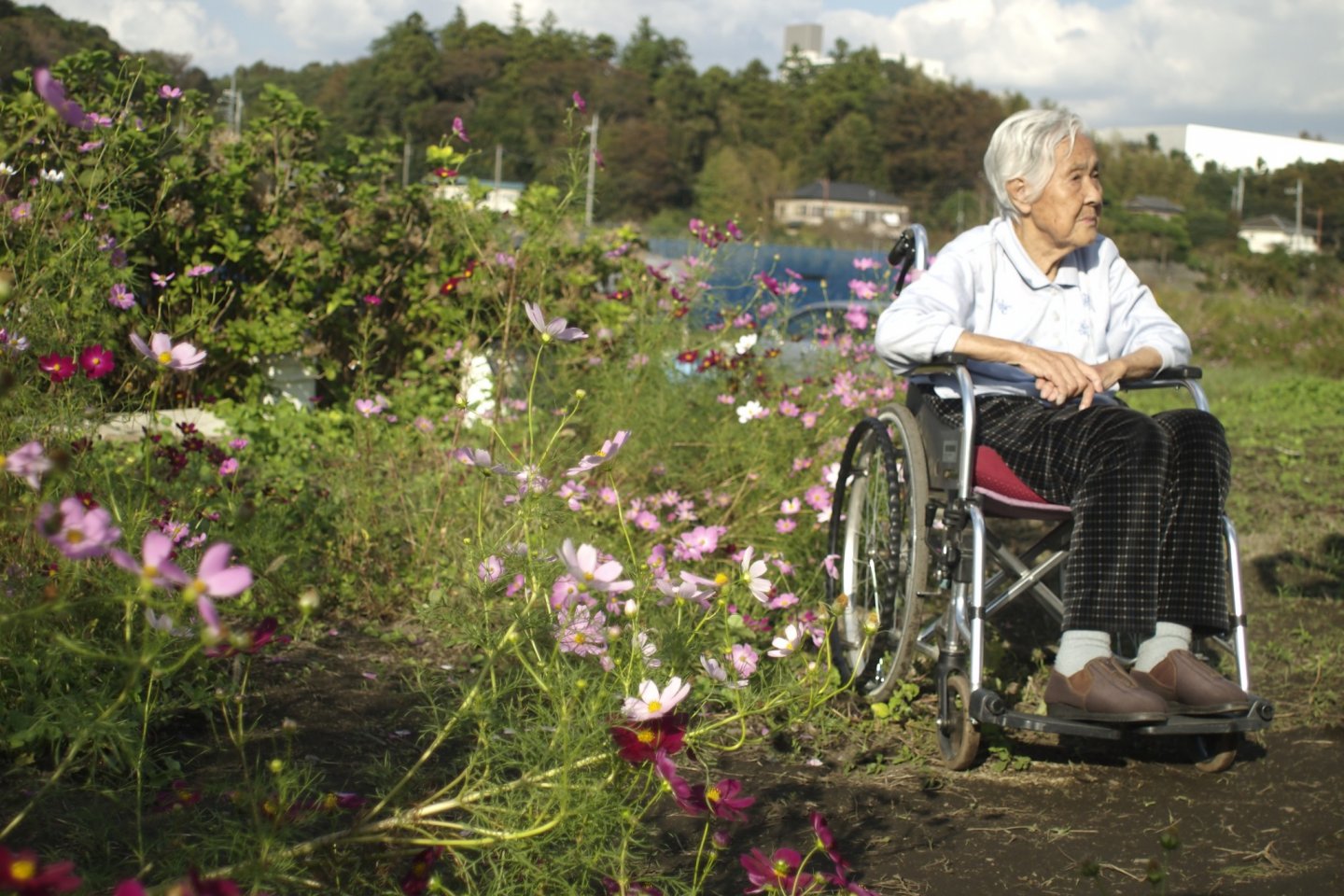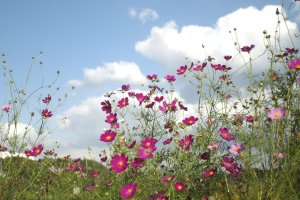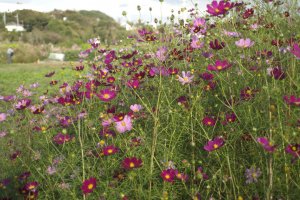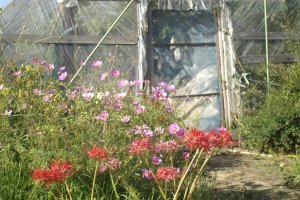In the Japanese class (organized by volunteer teachers) that I occasionally attend, I learned a few expressions related to flowers. For example: Hana yori dango (花より団子- I’d rather have dumplings than blossoms); ryou te ni hana (両手に花 – blossoms in both hands), among others. Referring to the first phrase, I remember telling my teacher: But sensei, generally, I prefer flowers to dumplings. Dumplings can wait but beauty can’t. Cherry blossoms bloom for a week and you have to take time to go and see them (perhaps with a bottle of good beer in hand); otherwise, they’d be gone. And on the train, if you are seated between two beautiful ladies (ryou te ni hana), you are considered a lucky man; a man twice blessed.
One day in October, a few years ago, I was looking for a field or a meadow of cosmos. I wanted to see a natural garden. I wanted to go somewhere I could have a relaxing walk and at the same time enjoy the blossoms; an autumn version of hanami. I found one not far from the Keio University campus in Fujisawa City, along the Koide River. From the north gate of JR Tsujido Station (Tokaido Line), I took a Kanachu Bus (#34) bound for Keio University; I got off at Karikome (刈込). It took about over twenty minutes.
Along the three-kilometer Koide River, some higanbanas (cluster amaryllis) were in still in bloom. These red flowers are always associated with graveyard blossoms. Hence, their reputation as 'flowers of grief' or 'flowers for the dead.' But I don't think so. I always associate them with rice harvesting season because they usually grow on the banks of paddies while the grains are ripening.
The rice fields had just been harvested. Bundles of rice on straw were being dried out on poles. The pampas grass, too, were in their prime; they were soaring up to the sky.
After walking for about a kilometer, I met a group of elderly men and women. Most of them were being pushed on wheel chairs. We were all going to the same direction -- to the cosmos fields. Care home centers in Japan usually organized blossoms-viewing tours for their patients/clients.
In the distance, I spotted the fields of cosmos. They were a sight to behold. The elderly men and women gazing at them was another moving moment – octogenarians or centenarians face to face with ephemeral blossoms! Two kinds of existence intertwined: one transient and the other had been living for almost a hundred years or so.
I couldn’t help but recall another proverb I learned from my Japanese sensei: Shinde, hana mi ga saku mono ka (死んで花実が咲くものか). While you are living, enjoy every moment of your existence; take pleasure in the beauties of the seasons. Because in death, neither flowers bloom nor fruit are borne.
C’est la vie, c’est la vie.

































